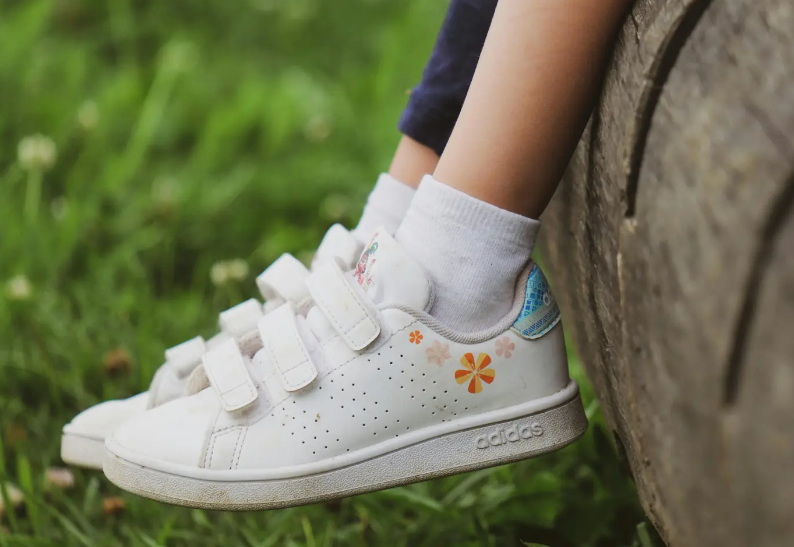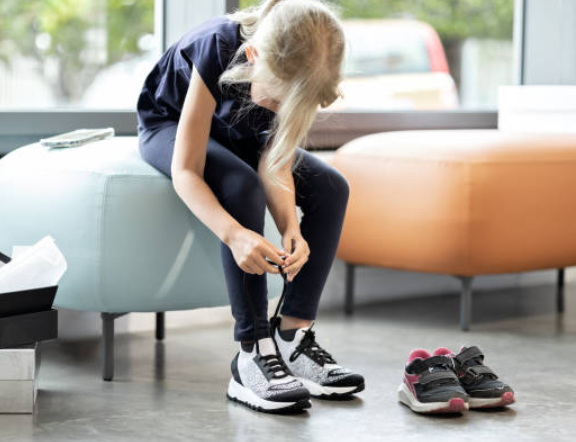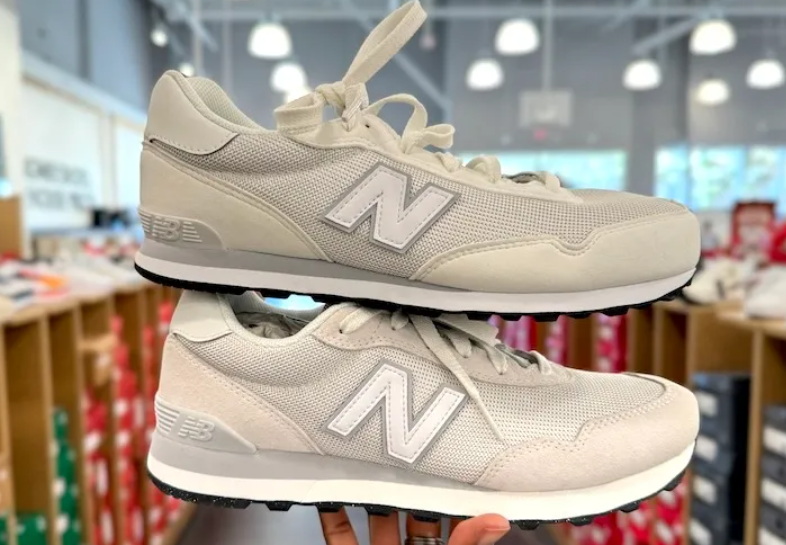Content Menu
● Introduction to Kids' and Women's Shoe Sizes
>> Benefits of Buying Kids' Shoes
● Considerations for Wearing Kids' Shoes
>> Comfort and Support
>> Health Implications
>> Customization Options
● Popular Brands for Kids' Shoes
● How to Choose the Right Fit
● Trends in Kids' Footwear
● Practical Considerations for Adults
● Cultural and Social Perspectives
● Fashion and Style
● Sustainability
● Online Shopping Tips
● Conclusion
● FAQs
>> 1. What is the typical conversion from women's to kids' shoe sizes?
>> 2. Are kids' shoes suitable for regular wear?
>> 3. What are the benefits of buying kids' shoes for women?
>> 4. How do kids' shoes differ in shape compared to adult shoes?
>> 5. Can I use kids' shoes for athletic activities?
The question of whether women can fit into kids' shoes is a common one, especially for those with smaller feet. Many women have discovered that they can indeed fit into kids' shoes, often finding it a cost-effective way to purchase popular brands at a lower price. However, there are several factors to consider, including the fit, comfort, and durability of kids' shoes compared to adult shoes.

Introduction to Kids' and Women's Shoe Sizes
Kids' shoe sizes, particularly those labeled as "big kids" or "youth," often overlap with women's shoe sizes. This overlap allows some women to wear kids' shoes comfortably. The conversion between women's and kids' shoe sizes typically involves subtracting 1.5 to 2 sizes from the women's size to find the equivalent kids' size.
Benefits of Buying Kids' Shoes
1. Cost Savings: Kids' shoes are generally cheaper than adult shoes, offering significant savings for women who can fit into them. For example, a pair of kids' sneakers might be $10 to $20 less than the adult version.
2. Style Variety: The kids' section often has a wider range of styles and colors, which can be appealing to women looking for unique or fashion-forward designs.
3. Tax Benefits: In some regions, kids' shoes are exempt from sales taxes, providing an additional financial advantage.
Considerations for Wearing Kids' Shoes
While buying kids' shoes can be beneficial, there are important considerations to keep in mind:
Comfort and Support
- Materials and Quality: Kids' shoes are designed to be outgrown before they wear out, meaning they often use cheaper materials and may lack the support and cushioning found in adult shoes.
- Foot Shape: Kids' shoes tend to have a wider, rounder toe box compared to adult shoes, which can be beneficial for those with wider feet but may not suit everyone.
Health Implications
Wearing kids' shoes regularly can lead to foot, leg, or back problems due to inadequate support and cushioning. It's advisable to reserve kids' shoes for casual or occasional wear and use proper adult shoes for activities requiring more support.
Customization Options
For those who find that kids' shoes lack sufficient support, adding orthotics or insoles can enhance comfort and provide better arch support.
Popular Brands for Kids' Shoes
Many popular brands offer stylish and comfortable kids' shoes that can appeal to adults:
- Adidas: Known for their iconic styles like Superstar and Stan Smith, available in kids' sizes with breathable materials.
- Native Shoes: Offers eco-friendly and lightweight options perfect for casual wear.
- Skechers: Provides comfortable and supportive shoes suitable for everyday activities.
How to Choose the Right Fit
Choosing the right fit is crucial, whether buying kids' or adult shoes:
1. Measure Your Feet: Use a shoe size chart or measure your feet at home to ensure accuracy.
2. Try Them On: If possible, try on shoes before purchasing to ensure a comfortable fit.
3. Consider Width: Kids' shoes often run wider than adult shoes, which can be beneficial for those with wider feet.
Trends in Kids' Footwear
This season's trends in kids' footwear include:
- Bright and Bold Colors: Vibrant hues like bright reds, electric blues, sunny yellows, and neon greens are popular.
- Eco-Friendly Materials: Sustainability continues to be a significant trend, with more brands focusing on eco-friendly materials.
- Playful Patterns and Designs: Shoes with playful patterns such as animal prints, space themes, and geometric designs are popular.
- Light-Up Features: Light-up shoes remain a favorite among kids.

Practical Considerations for Adults
While kids' shoes can be a great option for casual wear, it's important to consider their limitations:
- Durability: Kids' shoes are not designed to last as long as adult shoes, so they may need to be replaced more frequently.
- Support: For activities that require more support, such as running or hiking, adult shoes are generally better suited.
Cultural and Social Perspectives
The practice of women wearing kids' shoes is not only about practicality but also about fashion and self-expression. Many women enjoy the variety and affordability that kids' shoes offer, embracing the opportunity to explore different styles without the high price tag of adult shoes.
Fashion and Style
Kids' shoes can add a playful touch to outfits, allowing women to express their personal style in unique ways. For instance, pairing kids' sneakers with a dress or skirt can create a trendy, casual look.
Sustainability
Choosing kids' shoes can also be seen as a sustainable option, as it reduces the demand for new adult shoes and potentially extends the life of existing products. However, it's important to balance this with the need for proper support and comfort.
Online Shopping Tips
When shopping online for kids' shoes, consider the following tips:
- Check Reviews: Look for reviews from other adults who have purchased the same shoes to gauge fit and comfort.
- Size Charts: Use the brand's size chart to ensure you're getting the right fit.
- Return Policy: Make sure the retailer has a flexible return policy in case the shoes don't fit well.
Conclusion
While many women can fit into kids' shoes, it's essential to consider the potential drawbacks, such as reduced support and durability. However, for those looking for cost-effective options or unique styles, kids' shoes can be a great choice. Always prioritize comfort and support, especially for regular wear.

FAQs
1. What is the typical conversion from women's to kids' shoe sizes?
The typical conversion involves subtracting 1.5 to 2 sizes from the women's size to find the equivalent kids' size. For example, a women's size 7 is often equivalent to a kids' size 5.
2. Are kids' shoes suitable for regular wear?
Kids' shoes are generally not recommended for regular wear due to their lower quality materials and reduced support compared to adult shoes. They are best used for casual or occasional wear.
3. What are the benefits of buying kids' shoes for women?
Benefits include cost savings, a wider range of styles, and potential tax exemptions in some regions.
4. How do kids' shoes differ in shape compared to adult shoes?
Kids' shoes often have a wider, rounder toe box compared to adult shoes, which can be beneficial for those with wider feet.
5. Can I use kids' shoes for athletic activities?
It's generally not recommended to use kids' shoes for athletic activities due to their lack of support and cushioning. Adult shoes designed for specific sports are better suited for such activities.

















